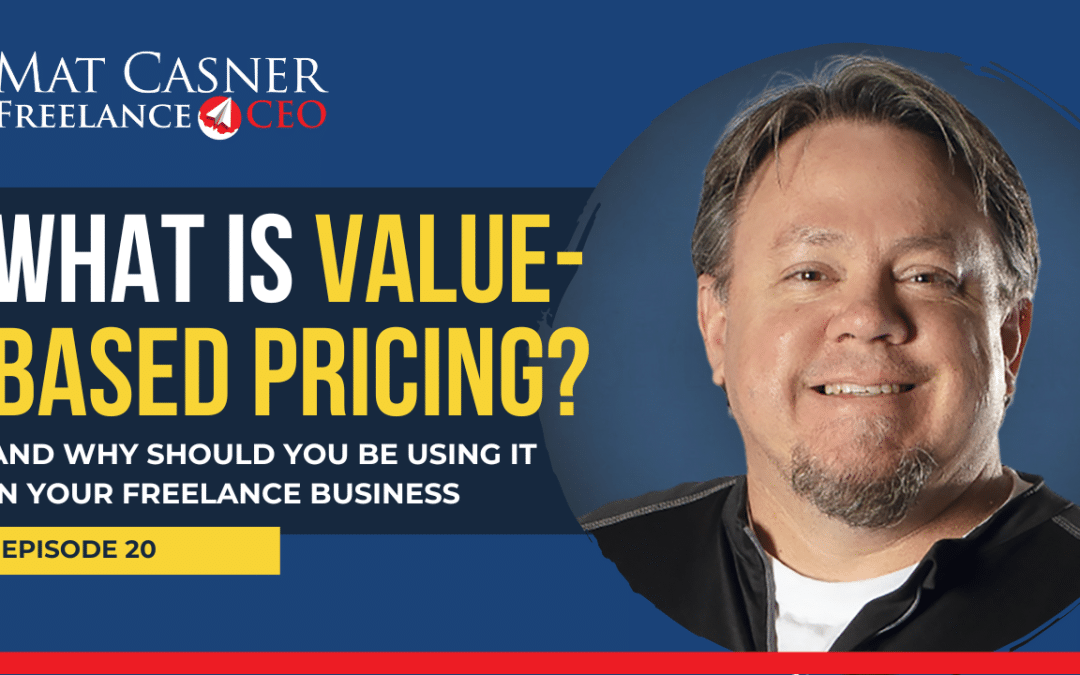
What is value-based pricing and why should you be using it in your freelance design business
Have you ever asked yourself this question? How can you price your services and make money when there are so many freelancers on services like Upwork and Fiber that are charging bargain basement prices? All right. Is there a way to even stand out and be considered among all the low offers? Listen, stick with me today. I’m going to show you how to get the price you want for the design services that you offer.
So what I wanna talk to you today is about why people spend money and why there’s this misconception that you have to be the lowest price out there to get good business.
I think that we all have this understanding that every client is always looking for the cheapest or the best deal in terms of where to invest their money to solve a problem. Well, here’s the deal guys. When you work with clients, there’s really one thing on their mind, and the first thing is not price. Okay? The first thing that they are interested in is getting a solution to their problem.
Now they realize that’s gonna cost money. And then you have different clients who would maybe view the the search for a solution in a little bit different way. There are gonna be some clients who are going to look for the bargain basement price, because in their mind, they’re thinking if they can check the box off, the problem’s going to go away. And so therefore, in order to check the box off and make the problem go away, I need to find a solution, and I don’t wanna spend a lot of money, so I’m gonna find the best price out there. Well, here’s the thing. They’re going to do that, and they’re going to spend their money and they’re gonna check their box, but here’s what’s not going to happen.
The problem is not going to go away. It’s going to keep nagging them, and it’s going to give them the sense that they’ve accomplished something in the short term and maybe feel like they’ve gotten a good deal, but they still have to deal with the ongoing issues that come along with the problem that they’re experiencing. Then you have the other client who values the solution and understands that the solution to the problem they have in their business is going to do one of two things.
It’s either going to save them money or it’s going to make them money. And they realize that to get an answer to the problem, they have to fix whatever’s broken in their business. And a smart business owner realizes that to fix the problem, you might have to make an investment. And a smart business owner is going to look for the the solution that best solves the problem, not necessarily the best price. I wanna tell you a little story. When I was in high school, I was shopping for a new vehicle. This was the first vehicle that actually I was going to be buying on my own. And as a college student, I didn’t have a lot of money, and so I was being very cautious and shopping to get the best deal I could afford.
Now, I had some things in mind in terms of things that I wanted, but realized that I only had so much money to spend, and so I was looking to spend my money in the best way possible. I did some shopping, and I found the truck that I absolutely fell in love with. So I was so excited to make this purchase because it gave me exactly what I wanted.
I made the purchase and loved the truck. I drove the truck for years and years and years, A couple of years after I made the purchase. However, I was talking with a friend and I was telling them about my truck and talking about my truck purchase, and my friend out of curiosity asked me, what did you pay for the truck? So I told them what I paid for the truck, and in the back of my mind, I had this little, you know, this nagging thought, did I pay too much? So I looked at my friend and I said, do you think I paid too much for my truck? He paused for a second, and then he looked at me and he said, Matt, do you like your truck?
I said, no, I don’t like my truck. I love my truck. Then he looked at me and he said, Matt, you did not pay too much. And guys, that was a huge lesson for me in terms of what I spent my money on, was something that I, based around the value of the purchase for me, it had exactly what I needed, and I loved the truck. And so for me, the price that I paid was not too high. Guys, when we are dealing with customers, it’s the same sort of situation. They’re looking for a solution to their problem, and they realize the smart business owners realize that it’s going to take an investment to solve the problem. So they are interested in finding the best solution, not necessarily the best price. And so when we are working with our customers, I’m gonna show you three different things that I think you need to consider when pricing your services for your customer. Tip number one, know your customer and the potential outcomes of their buying decision. In other words, you need to know the why of their buying decision. Why are they shopping around?
Why are they talking for you? What is the problem that they’re trying to solve? Or the answer to the question that they’re trying to answer? Okay? And then you need to find out how much value that solution or that answer is going to mean intangible terms for that business. The benefit of your product or service provides the customer and influences the value of the product that you’re going to provide.
So you need to do a little bit of digging. You need to do a little bit of research. You need to know your customers market just a little bit and find out really how much profit or loss is actually writing on this decision that they’re making. Because in their mind, if they can spend a dollar and then get two back, that’s great. If they can spend a thousand and get 2000 back, that’s even better. If they can spend 10,000 and get a hundred thousand, well, they’ll do that deal all day long. So if you know what kind of value you are going to bring to your business, then the price needs to fit or needs to be commensurate, kind of with what that solution is going to bring to your customer.
So know your customer and the potential outcomes of the purchase that they’re going to make with you. Number two, there’s this misconception that higher prices scare people away. And I’m not going to say that they don’t. I know that there’s a lot of times when I go shopping and I see a couple of products on the shelf and they look to be about the same, well, I’m going to pick the one that’s cheaper. Why? Well, because I’m not really gonna be getting any benefit by paying for the one that’s a few dollars more. If I can get what I need in the cheaper product, I’ll buy the cheaper product. However, there are some times when I make purchases that I don’t necessarily look at the price.
I look at what the perceived value is. So when I’m shopping for, let’s say, a pair of shoes, and I’ve bought a cheap pair of shoes, and I know that those cheap pair of shoes don’t last me very long. Well, if I buy a more expensive pair of shoes, I’m automatically going to think that there’s some extra value there that these shoes might last me a little bit longer.
And over the lifetime of the ownership of those shoes, they might actually cost me less. So looking at a higher price doesn’t always scare me away. I always look at what the perceived value is. Now, here’s another thing. When people pay more for a product or services, they tend to be more responsive. If you get something for free, you’re not going to pay much attention to it.
In fact, you may not pay attention to it at all. But if you make an investment in something or a solution or a product, you are gonna take care and you’re gonna make sure that that product or solution gets implemented correctly. So when you have some skin in the game, i e, you pay a little bit more for a product, you’re gonna be more responsive.
And let me just tell you this, guys, when working with clients that are willing to pay a little bit more for your services, they’re the best clients that you can have because they’re responsive, they want to solve the problem and they will work with you. Some clients that I’ve had that are bargain basement shoppers is they hire you and then you can’t get ’em ’em to answer the phone.
You can’t get ’em to answer email. They’re slow getting materials back to you. They just, it’s not a priority. Well, they haven’t invested any money in it. There’s no skin in the game. So a higher price means that people are gonna perceive and they’re gonna treat you differently because of what they’re paying for the service or product that you’re offering.
Now, tip number three is when you start your price at the top, you give yourself an excellent position to be in. Because listen, you can always come down, alright? You can negotiate, you can always have a conversation with the client, and you can always help them come down to a price that they can’t afford. Now, I’m not asking you to give away any services, but I am saying that when you start with a higher price and you are able to come down for that customer to a price that they can’t afford, the customer feels like they’re getting a good deal. The one thing that you can’t do, my friend, is start with a low price and never expect to charge more. They’re gonna just, they’ll walk you right out the door and they’ll go find somebody else.
So by starting with a higher price, it puts you in the driver’s seat and allows you more control and allows you to work with the client to come up with a solution that only meets their need but is affordable. So the three tips that I have for setting up a value-based pricing structure for your business is, number one, know your customer and the potential outcome or the benefit that they’re going to get by hiring you and your solution.
Number two, understand that higher prices lead to higher perceived value, which comes with respect and attention. And number three, start with your price at the top so that you are in the driver’s seat and you can control the game. From there, guys, I hope this is helpful for you. When I learned the power of value-based pricing, it was a game changer for me and my business, and I hope it will be for you too.

